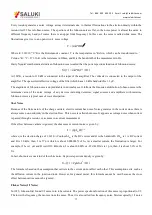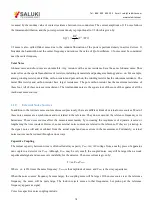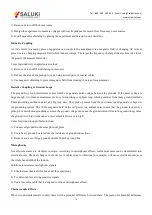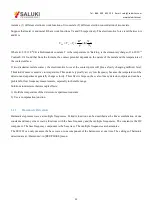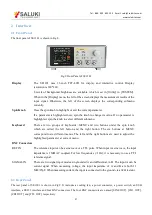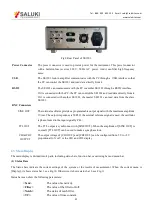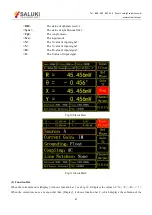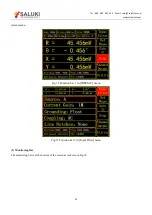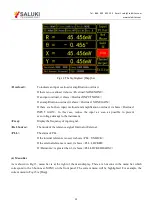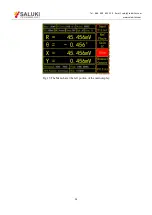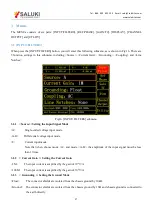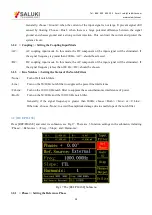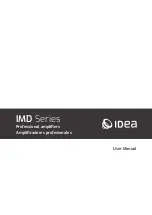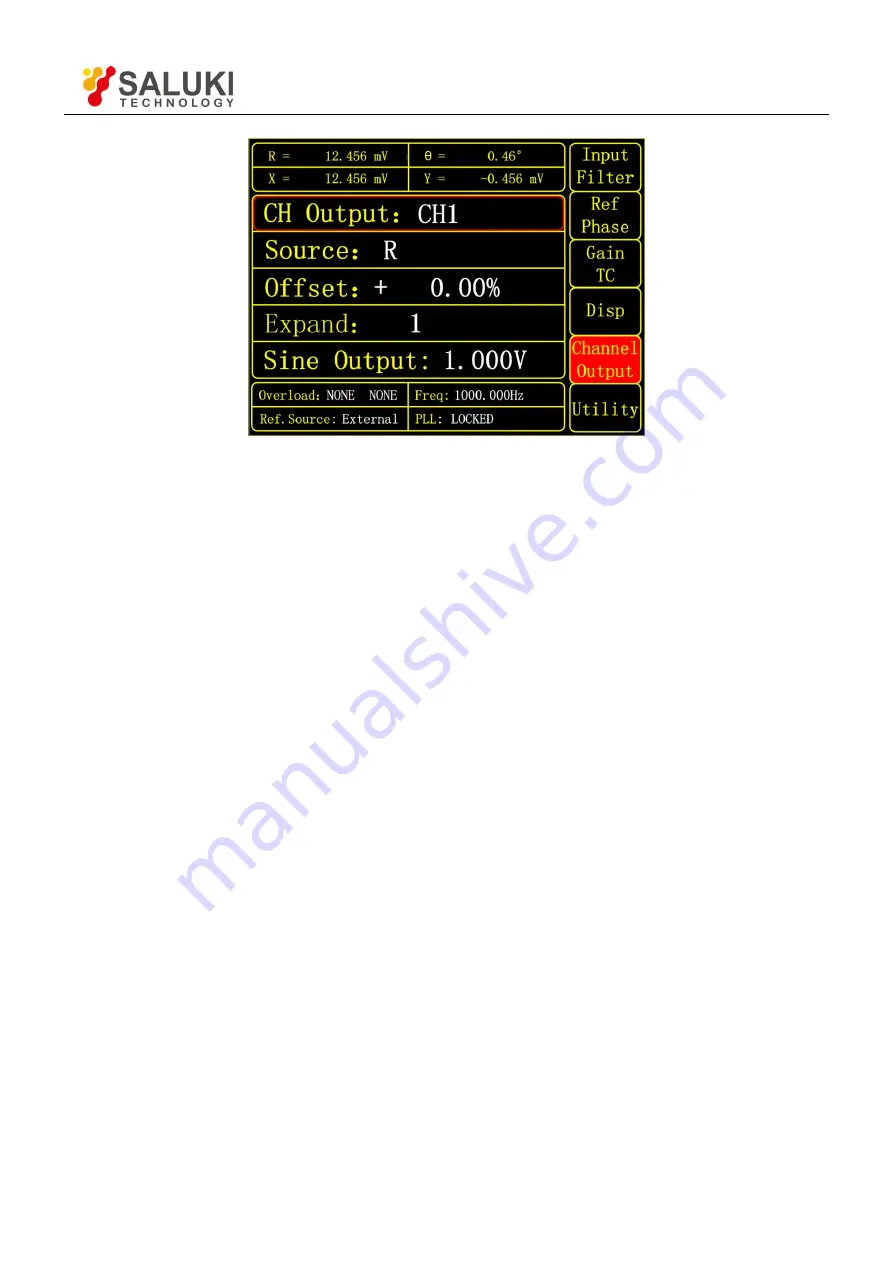
Tel: 886. 909 602 109 Email: sales@salukitec.com
www.salukitec.com
13
Fig.7 [Channel Output] Submenu
1.7 Dynamic Reserve
The definition of dynamic reserve is the ratio of the largest tolerable noise signal to the full scale signal, expressed in dB,
which is defined as:
Dynamic reserve = 20Lg(OVL/FS)(dB)
Here OVL is the total dynamic range of the input signal. FS is the dynamic range of the output signal. If the dynamic
reserve is 100 dB, the tolerable noise can be 10
5
times the input.
The ‘tolerable' means that the noise at the dynamic reserve limit should not cause an overload anywhere in the
instrument. Overload might appear at the input of the pre-amplifier and the output of DC amplifier. We can adjust the
distribution of the gain to achieve high dynamic reserve. This means that the input signal gain at the pre-amplifier should
be set very low so the noise is not likely to overload. Then the low pass filter removes the large noise component from
the PSD output which allows the remaining DC components to be amplified to reach 10 V full scale.
This gain is distributed between AC gain before the PSD and DC gain following the PSD. The total gain is the product of
the AC gain and the DC gain. Suppose the total gain is a constant. If the AC gain increases and the DC gain decreases,
the input noise is easy to overload after AC gain. Thus, the dynamic reserve and the DC drifts decrease. In contrast, if the
AC gain decreases and the DC gain increases, the dynamic reserve increases. In this case, the output stability will
decrease and the accuracy of measurement will be lower.
The noise frequencies and amplitudes affect the accuracy of the DC output signal. Noise at the reference frequency with
large amplitude becomes part of the DC signal after the PSD. This enlarges the output error of the lock-in amplifier.
The dynamic reserve is related to noise frequency. The dynamic reserve is 0dB at reference frequency and increases
when the noise frequency moves away from the reference frequency. It reaches a maximum value when the frequency is
far enough. The dynamic reserve near the reference frequency is important to noise tolerance of the instrument.
Providing more low pass filter stages can improve the performance of the filters and then increase the dynamic reserve
close to the reference frequency. The dynamic reserve far from the reference frequency is generally high but has little

















